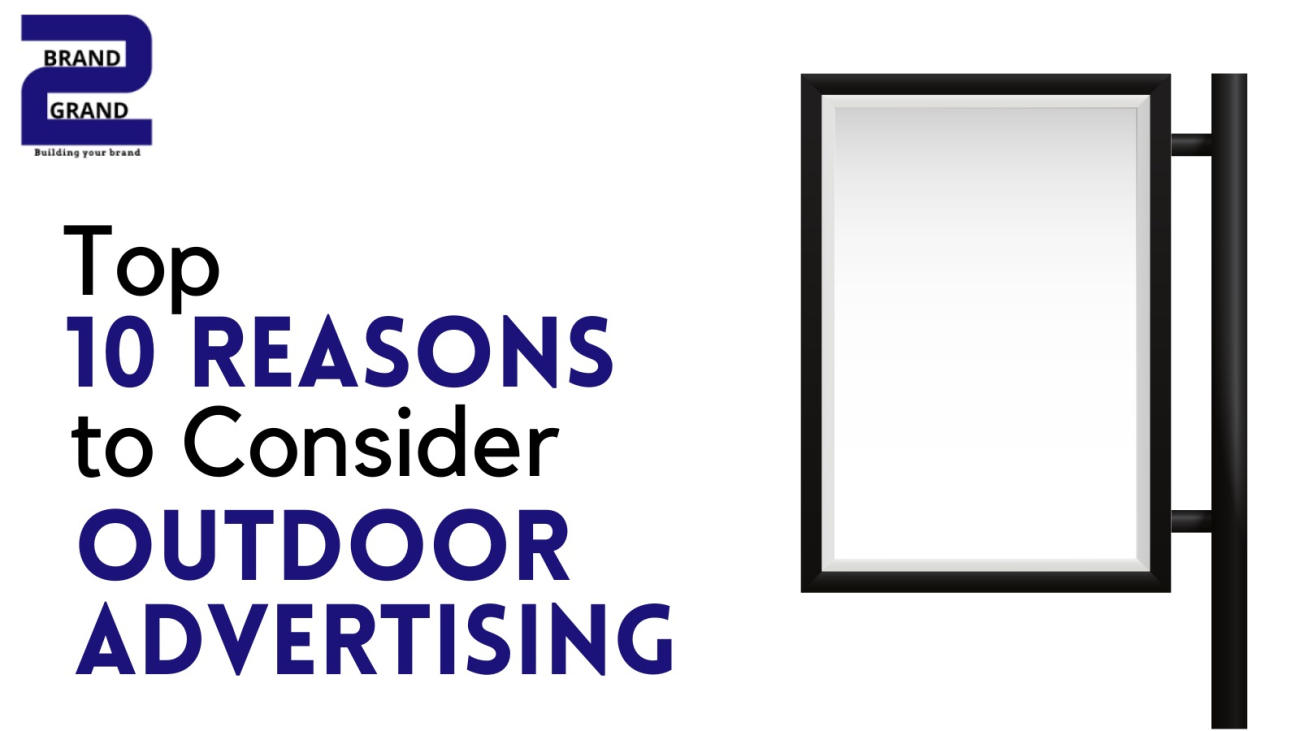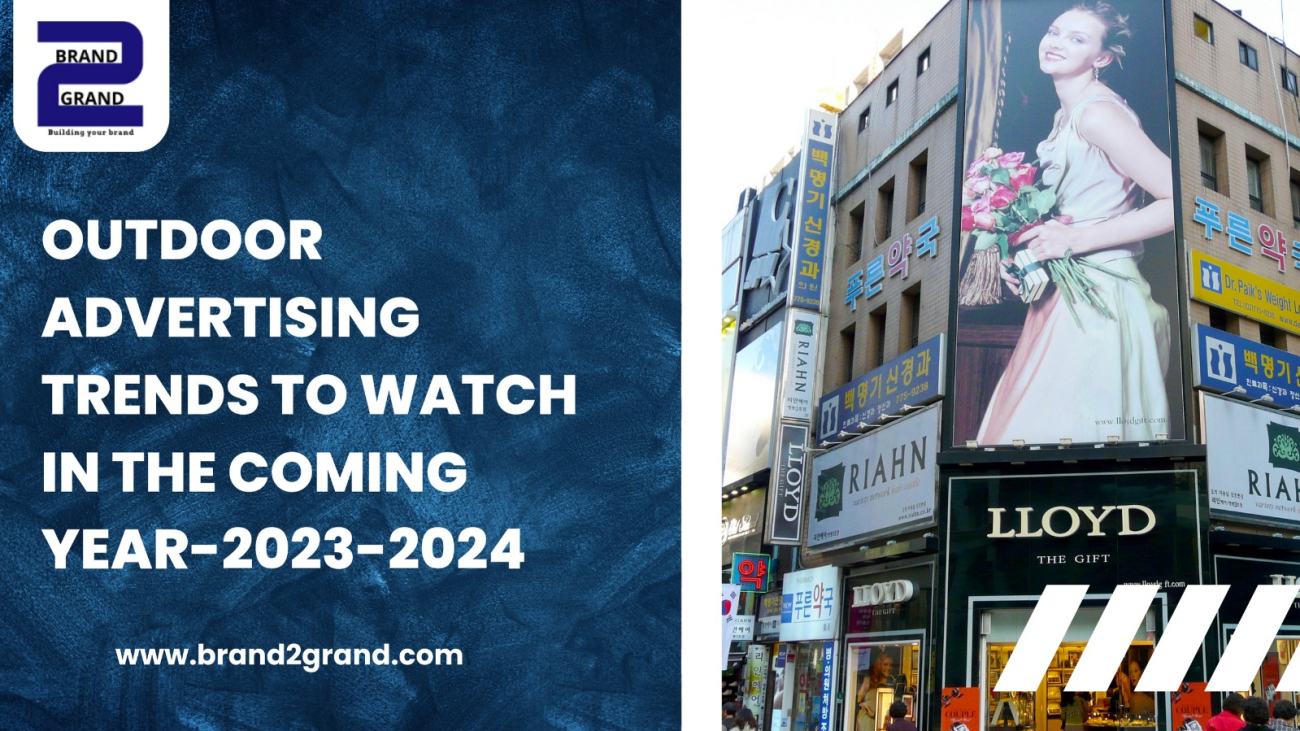A. Definition of outdoor advertising
Outdoor advertising refers to the promotion of products, services, or brands through advertisements displayed in public spaces such as billboards, transit shelters, and digital screens.
B. Overview of the blog post’s purpose
This blog post aims to explore the importance of outdoor advertising by examining its benefits and return on investment (ROI) for businesses.
II. Wide Audience Reach and Exposure
A. Mass exposure to a diverse audience
- Outdoor advertising reaches a large and diverse audience, including commuters, pedestrians, and drivers, providing businesses with broad exposure.
B. Reaching consumers during their daily routines
- Outdoor ads effectively target consumers during their daily activities, such as commuting to work, shopping, or socializing, allowing brands to interact with them in their natural environment.
C. Targeting specific geographical locations for maximum impact
- Outdoor ads can be strategically placed in specific locations to target desired demographics or communities, optimizing the reach and impact of the advertising campaign.
III. High Visibility and Brand Awareness
A. Capturing attention with large-scale advertisements
- Outdoor ads utilize large-scale formats and eye-catching visuals to grab attention and create an immediate visual impact, enhancing brand visibility.
B. Creating memorable brand experiences
- Through creative design, compelling messaging, and innovative formats, outdoor advertising creates memorable brand experiences that leave a lasting impression on viewers.
C. Enhancing brand recall and recognition
- Consistent exposure to outdoor ads reinforces brand presence, leading to increased brand recall and recognition when consumers encounter the brand in other contexts.
IV. Increased Local Market Penetration
A. Reaching consumers in specific markets
- Outdoor advertising can be localized to target specific markets or communities, allowing businesses to reach their target audience in particular regions or neighborhoods.
B. Targeting local communities effectively
- Outdoor ads enable businesses to connect with local communities, building familiarity and trust with the local customer base.
C. Strengthening brand presence and market share locally
- By consistently exposing the brand to local consumers, outdoor advertising contributes to strengthening brand presence and gaining a larger share of the local market.
V. Cost-Effective Advertising Solution
A. Lower cost compared to other advertising mediums
- Outdoor advertising often offers a cost-effective solution compared to traditional media channels, such as television or radio advertising, making it accessible to businesses with varying budgets.
B. Longevity and continuous exposure
- Outdoor ads provide continuous exposure for extended periods, maximizing the value and impact of the advertising investment over time.
C. Maximizing reach and frequency with strategic placement
- Careful selection of high-traffic locations and effective media planning allow businesses to maximize the reach and frequency of outdoor ads, ensuring the message reaches the desired audience consistently.
VI. Complementary Advertising Channel
A. Integration with other advertising platforms
- Outdoor advertising can be seamlessly integrated with other advertising channels, such as digital and social media, print, or television, creating a cohesive and multi-channel marketing strategy.
B. Reinforcing brand messaging and campaigns
- Outdoor ads reinforce brand messaging and campaigns by providing additional touchpoints and extending the reach of the brand’s core messages to a wider audience.
C. Amplifying the impact of multi-channel marketing strategies
- Including outdoor advertising as part of a comprehensive marketing strategy amplifies the overall impact, ensuring that the brand message reaches consumers across various channels and touchpoints.
VII. Engaging and Interactive Experiences
A. Innovative and interactive outdoor ad formats
- Outdoor advertising embraces innovation, utilizing interactive elements, augmented reality (AR), or QR codes to create engaging and immersive experiences for consumers.
B. Encouraging consumer engagement and participation
- Outdoor ads can incorporate calls-to-action, inviting consumers to interact with the brand through social media, contests, or experiential activations, generating increased engagement and participation.
C. Generating buzz and word-of-mouth marketing
- Memorable and interactive outdoor advertising experiences often generate buzz and excitement, leading to increased word-of-mouth marketing and organic brand advocacy.
VIII. Measurable ROI and Effectiveness
A. Tracking and measuring ad performance
- Outdoor advertising can be tracked and measured through various methods, including footfall tracking, digital interactions, or custom URLs, allowing businesses to gauge the effectiveness of their campaigns.
B. Gathering data and insights for optimization
- By analyzing data collected from outdoor advertising campaigns, businesses can gain valuable insights about consumer behavior, demographics, and the effectiveness of specific ad placements, enabling optimization and informed decision-making.
C. Calculating ROI through metrics such as footfall, conversions, and brand lift
- With the appropriate tracking mechanisms in place, businesses can calculate the return on investment (ROI) of their outdoor advertising efforts by measuring metrics such as increased footfall, conversions, or changes in brand perception and awareness.
IX. Case Studies and Success Stories
A. Showcasing successful outdoor advertising campaigns
- Highlighting real-world examples of successful outdoor advertising campaigns that achieved notable results in terms of brand awareness, market penetration, or increased sales.
B. Highlighting the positive impact on brand awareness and sales
- Illustrating the impact of outdoor advertising by sharing specific success stories that demonstrate the effectiveness of the medium in enhancing brand awareness and driving business growth.
C. Inspiring and providing practical examples for businesses
- Providing practical insights and learnings from successful outdoor advertising campaigns to inspire and guide businesses in planning and executing their own outdoor advertising strategies.
X. Conclusion
A. Recap of the importance of outdoor advertising
- Outdoor advertising offers wide audience reach, high visibility, increased local market penetration, cost-effectiveness, complementary integration with other channels, engaging experiences, measurable ROI, and a track record of success.
B. Emphasizing its benefits in reaching a wide audience, increasing brand awareness, penetrating local markets, cost-effectiveness, complementing other channels, engaging consumers, and measuring ROI
C. Encouraging businesses to consider outdoor advertising as a valuable addition to their marketing strategies, providing opportunities for brand growth and enhanced customer engagement.








